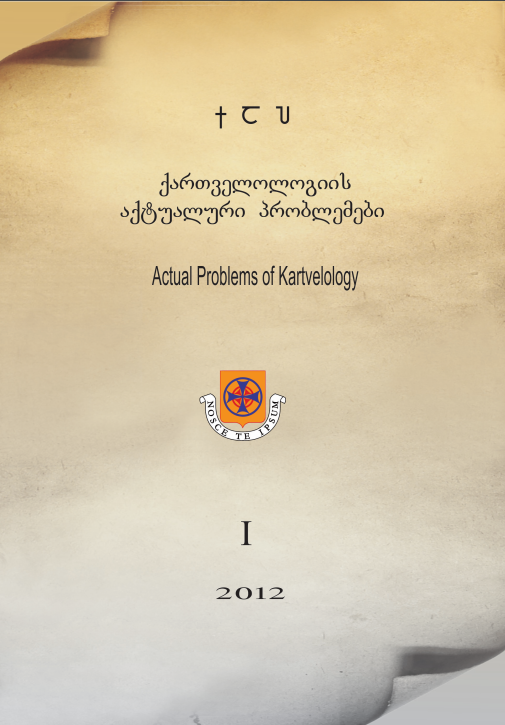Georgians and Iranians in Each other's Notion
Keywords:
Georgians, Iranians, MemoryAbstract
Throughout its long history, Iran as a whole has had and continues to have independent statehood three times, once during the Achaemenid period (5th-3rd centuries BC), secondly during the Sassanid period (3rd-7th centuries BC), and thirdly since the Safavid period (16th-18th centuries) to the present day. All three times, the eastern part of Georgia was under the political influence of Iran. Although the political relations between Iran and Georgia were not permanent, it can be said that relations in the cultural sphere between these two countries have always existed in different eras and in various forms. We were interested in how Georgians and Iranians perceived each other historically. The work consists of two parts. The first part will review the perceptions of Iranians about Georgians, and the second, on the contrary, Georgians about Iranians.
References
გ. წერეთელი 1993 _ გ. წერეთელი, საქართველოს ირანულ სახელწოდებათა ისტორიისათვის, კრებ. `საქართველოსა და ქართველების აღმნიშვნელი უცხოური და ქართული ტერმინოლოგია”, თბილისი, 1993;
თ. ჩხეიძე 1993 _ თ. ჩხეიძე, საქართველოსა და ქართველების აღმნიშვნელი ტერმინები საშუალო სპარსულსა და პართულ ენებში, კრებ. `საქართველოსა და ქართველების აღმნიშვნელი უცხოური და ქართული ტერმინოლოგია”, თბილისი, 1993; ირან. ენათ. საფუძვლები 1982
ვ. გაბაშვილი 1980 _ ვ. გაბაშვილი, შუა საუკუნეების ახლო აღმოსავლური კულტურა, კრებ., აღმოსავლური კულტურა, თბილისი, 1980;
ივ. ჯავახიშვილი 1965 _ ივ. ჯავახიშვილი, ქართველი ერის ისტორია, II, თბილისი, 1965;
`ქართლის ცხოვრება” 1959 _ `ქართლის ცხოვრება”, ს. ყაუხჩიშვილის რედაქციით, თბილისი, 1959;
რუსთველი 1966 _ რუსთველი შ., `ვეფხისტყაოსანი”, აკ. შანიძისა და ალ. ბარამიძის რედაქციით, თბილისი, 1966;
გ. ჯაფარიძე 1993 _ გ. ჯაფარიძე, ქართველებისა და საქართველოს არაბული სახელწოდებები, კრებ. `საქართველოსა და ქართველების აღმნიშვნელი უცხოური და ქართული ტერმინოლოგია”, თბილისი, 1993.
Published
How to Cite
Issue
Section
License
Copyright (c) 2025 Actual Problems of Kartvelology

This work is licensed under a Creative Commons Attribution-NonCommercial-NoDerivatives 4.0 International License.









